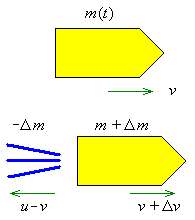![]()
![]()
![]()
Therefore an integrating factor does not exist as a
function of x only.
![]()
![]()
The exact ODE is therefore

Following the non-singular solution,
![]()
![]()
However, note that the singular solution
y = 1 is also consistent with the initial
condition
Therefore the complete solution is
![]()
[One could spot the common factor of (y – 1)
initially, take note of the singular solution, then divide
the ODE by it to leave the much simpler separable ODE












